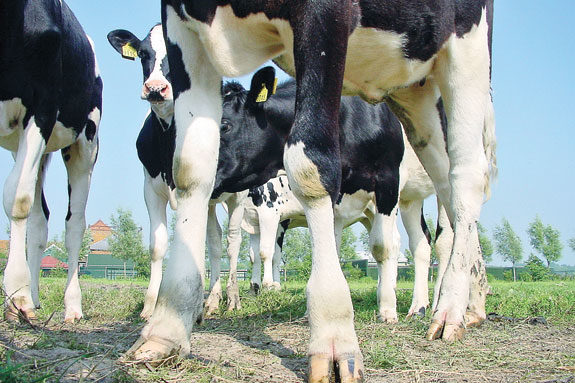Lameness is one of the leading reasons for milk loss on any dairy. It is also a hot animal welfare topic, according to Dr. Gerard Cramer, who is a bovine hoof care consultant, educator and researcher from Ontario, Canada. Cramer recently discussed his hoof health program via webcast.
Here were his tips:
1. Record and use data – Often trimmers and dairies record lameness events but fail to use those records to monitor progress thereafter.
Dairies should work with trimmers to set realistic goals for their herd and set up an action plan to monitor and assess herd foot health performance.
2. Find lame cows – The key to reducing lameness is early detection and treatment. Farm employees should have visual and manual training on signs to help identify and diagnose lame cows.
Proper handling and treatment facilities are also a must, making treatment easier and safer.
3. Clean and dry feet – Manure and moisture act as a source and medium for bacteria growth. Cleaning your herd’s environment and reducing their exposure to bacteria should aid in reducing lameness.
4. Comfort – Cows have a time budget and should spend 12 hours lying, seven hours eating, drinking and socializing and no more than three hours milking.
Increased cow comfort should increase resting time and reduce standing time. Strategic use of rubber in common standing areas can also be an effective tool.
5. Foot dipping – Foot baths are a simple way to treat and prevent new lesions from forming, but they need to be used routinely to be effective.
Properly sized and designed baths should increase contact time per hoof; the industry is starting to trend towards longer foot baths to increase dips per hoof. Water pre-baths are not recommended.
6. Weight bearing – The goal of hoof trimming is to treat and prevent future lameness and to create cows that have a balanced weight distribution.
Trimmers should attend training and continuing education events and also carefully record cows they trim. Dairymen should make it a priority for cows to have maintenance trimming at least twice per year, depending on hoof growth and wear.
7. Minimize metabolic stress – Cows are more susceptible to metabolic issues during the transition period; try to avoid severe body condition score losses during this time.
First-calf heifers especially can suffer social stresses of being in new groups and the bottom of the pecking order. Nutrition also comes into play – feeding management is extremely important in the areas of quality, quantity and consistency.
The main take-home messages are that we, as an industry, need to focus on reducing lameness through early identification and treatment. By monitoring issues, causes, treatments and effectiveness, we can have measurable results to help shape protocols. PD
—Excerpts from Beyond Products Blog, November 30, 2011; http://blog.animart.com






